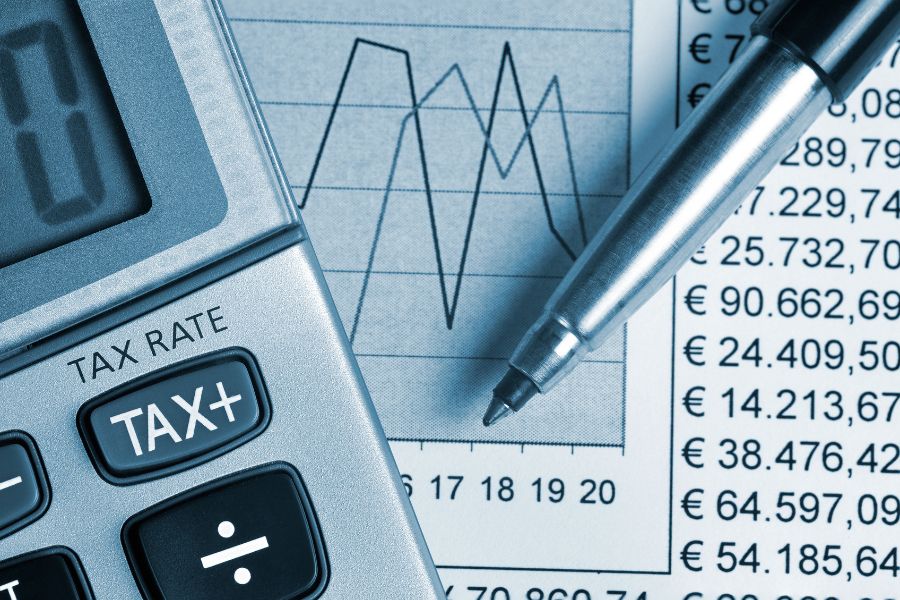The IRS Section 179 deduction lets business owners deduct the full amount of the cost of qualifying new and used machinery, furniture, vehicles, and certain improvement property up to $1,220,000 in 2024. Property purchased in excess of that threshold is eligible for regular depreciation.
In the absence of Section 179, the cost of that same property would have to be broken up into smaller deductions over multiple tax years instead of being deducted in one lump sum. For example, under normal depreciation rules, a computer’s cost would be deducted over five years, whereas under Section 179, the computer’s cost is immediately deducted, resulting in immediate tax savings.
Key Takeaways:
- The Section 179 deduction is a full, current year deduction for the cost of property placed in service, subject to limitations.
- The maximum Section 179 deduction is $1,220,000 for 2024 ($1,160,000 for 2023).
- The maximum Section 179 deduction is reduced dollar for dollar by the amount of Section 179 property purchased during the year that exceeds $3,050,000 ($2,890,000 for 2023).
What Is Section 179 Property & What Qualifies for 179 Deduction?
Section 179 property refers to property eligible for the 179 deduction in the current year. The term “179” is used because these enhanced depreciation rules are from Section 179 of the IRS code.
Section 179 property includes the following property placed in service during the year and used in a trade or business:
- New and used machinery, office furniture, tools, and equipment
- New and used vehicles (subject to some special limitations discussed below)
- Qualified improvement property, such as improvements to the interior made after the building was placed in service, e.g., drywall, interior doors, lighting, flooring, ceilings, fire protection, and plumbing
- Certain nonresidential real property improvements, such as roofs; heating, ventilation, and air conditioning (HVAC); fire protection and alarm systems; and security systems
- Computers, off-the-shelf software, printers, and other computer equipment
- Smartphones
These items do not qualify for the deduction:
- Intangible assets, such as patents and copyrights
- Land
- Property purchased but not placed in service during the year
- Furniture and equipment used in a rental activity, unless the rental activity rises to the level of a trade or business (gray area in the tax law—consult a tax professional)
- Property held for investment
- Residential real property and improvements
- Nonresidential real property, except for certain improvements listed above
- Property received as a gift or inheritance
- Certain property purchased and leased to others
Vehicles as Section 179 Property
While vehicles qualify as Section 179 property, they have special limitations. You can claim the Section 179 deduction for both new and used vehicles that you have purchased during the year.
If the vehicle is used for both personal and business reasons, it must be used more than 50% of the time for the business to qualify for the Section 179 deduction. The law requires written evidence of the business miles to claim any deduction for a vehicle.
Type of Vehicle | 2024 Section 179 Limits | 2023 Section 179 Limits |
|---|---|---|
Cars (Up to 6,000 Pounds) | $12,400 | $12,200 |
Passenger Trucks and Vans (Up to 6,000 Pounds) | $12,400 | $12,200 |
SUVs, Passenger Trucks & Vans (Between 6,000 and 14,000 Pounds) | $30,500 | $28,900 |
Vehicles Modified for Nonpersonal Use (Including Ambulances, Hearses, Delivery Vans & Tow Trucks) | No limit | No limit |
The Section 179 limitation must be reduced for vehicles that aren’t used 100% for business. For instance, if a car is used 90% for business, the maximum deduction for 2024 is $11,160 ($12,400 × 90%). If the vehicle costs more than the maximum deduction, the remaining cost of the car is depreciated under the normal rules.
You may like:
Section 179 Recapture
You can think of Section 179 recapture as a way to repay the IRS for the tax benefit you received.
As mentioned previously, to qualify for the Section 179 deduction, listed property—like vehicles—must be used more than 50% of the time for business purposes. If the use falls to 50% or below, the Section 179 deduction that you claimed must be recaptured by recognizing taxable income.
You’ll be required to recapture all or part of the Section 179 deduction. Since you’ll need to include this amount on your tax return as income, you’ll need to know how to figure out your Section 179 recapture amount.
How to Compute Recapture
- Step 1: Compute the amount of depreciation that would have been allowable on the property under regular MACRS. You should begin with the year the property was placed in service and include the year of recapture.
- Step 2: Subtract the depreciation calculated in Step 1 from the Section 179 deduction you claimed. The difference is the recapture amount.
Once you have figured out the recapture amount, include it in Part IV of IRS Form 4797.
Features of the Section 179 Deduction
Section 179 is elected by completing Part 1 of IRS Form 4562. This form summarizes your depreciation expense and is included with your business return.
Maximum Expense Limitation
The maximum Section 179 deduction of $1,220,000 for 2024 ($1,160,000 for 2023) is reduced dollar for dollar by the amount of Section 179 property purchased during the year that exceeds $3,050,000 ($2,890,000 for 2023).
So, if over $4,270,000 is spent on eligible property in 2024, the maximum 179 deduction is reduced to zero and no 179 deduction is allowed. Any amounts ineligible for Section 179 can be depreciated under the normal MACRS rules.
Let’s say you purchase $3,500,000 of Section 179 property in 2024. Your maximum deduction will be reduced by $450,000 (from $1,220,000 to $770,000), which is calculated by subtracting the limitation ($3,050,000) from the total amount purchased ($3,500,000).
Of your $3,500,000 in purchases, you can deduct $770,000 immediately under Section 179 in 2024. The remaining $2,730,000 must be depreciated over future years.
Section 179 Taxable Income Limitation and Carryover
The total amount of Section 179 deduction that you can claim in any given year isn’t only limited by the annual dollar limit—it’s also subject to the taxable income limit. That means that the amount of Section 179 deduction you claim cannot exceed your taxable income after applying all other deductions.
In other words, your Section 179 deduction cannot create or increase a taxable loss. The taxable income limitation applies at the entity level (partnership or S-corp) and then again on the owner’s (partner or shareholder) return.
However, the IRS has granted business owners some grace. You can carry over any disallowed cost for an unlimited number of years. The carryover only applies to the taxable income limitation—not the dollar limitation discussed in the previous section.
Here is a summary of the main Section 179 limitations:
- Dollar limitation (a maximum dollar amount is set by the IRS for Section 179 purchases for the year; the 2024 amount is $1,220,000)
- Taxable income limitation (Section 179 is only applicable to the extent that there is taxable income and will not result in taxable loss)
- Eligible property limitation (only certain kinds of property are eligible for Section 179 treatment)
The dollar limitation for married couples filing joint and single taxpayers is the same. However, if a married couple files separate returns, then they must split the dollar limitation and can choose how to allocate the limitation. However, if no special allocation is made, each spouse is limited to 50% of the dollar limitations shown above.
How Section 179 Carryover Works
When there isn’t enough taxable income to use up the Section 179 taken in the current year, the unused Section 179 amount is carried forward indefinitely until future year income has completely absorbed the carryover.
Here is an example to show how the carryover would work:
David is a calendar-year taxpayer. He has $260,000 of Section 179 deduction that was disallowed due to the taxable income limitation in 2023 and carried to 2024.
In 2024, David buys property for his business costing $1,000,000 and starts using it. He wishes to use the Section 179 deduction for this purchase. The $1,000,000 purchase is beneath the 2024 Section 179 limitation of $1,220,000.
David’s 2024 taxable income—including all of his trade or business activity but before the Section 179 deduction—is 300,000. His 2024 Section 179 deduction is $1,000,000, and the amount carried forward to 2025 is $960,000, as shown in the table below.
DAVID’S SECTION 179 CALCULATION | ||
|---|---|---|
Current Year Deduction | Carryover Schedule | |
Carryover From 2023 | $260,000 | |
New 2024 Property | $1,000,000 | |
Current Year 179 Deduction Before Taxable Income Limitation | $1,000,000 | |
Current Year Section 179 After Taxable Income Limitation | $300,000 | $700,000 |
Carryover to 2025 | $960,000 | |
Frequently Asked Questions (FAQs)
Yes, Section 179 is an annual election. The maximum deduction is increased each year for inflation.
Yes, Section 179 allows you to deduct the cost of financed property even though you haven’t yet had to spend any cash.
The year you purchase equipment might matter because the maximum Section 179 deduction is adjusted for inflation annually. However, equipment purchased any time of the year—even the last day of the year—is eligible for a full deduction under Section 179.
Section 179 can be 100% of the cost of the asset, whereas bonus depreciation is generally a percentage of an asset’s cost. Also, Section 179 has a limit on the amount that can be spent each year, while bonus depreciation does not. You must have income to utilize Section 179 depreciation, which is not a requirement to take bonus depreciation. There are also some important differences in the type of property that qualifies for each, and you can learn more in our bonus depreciation vs Section 179 comparison.
Bottom Line
Claiming the Section 179 deduction can be an immense help to your business, with substantial tax savings in the current year. With a generous limit of more than $1.2 million, few small businesses have to wait to deduct their equipment through depreciation.


